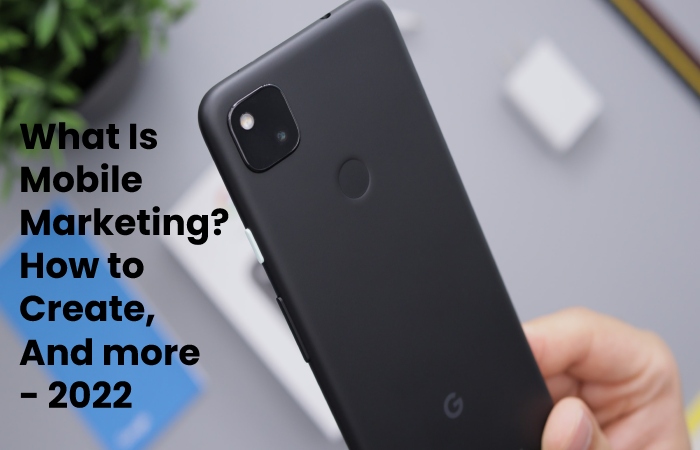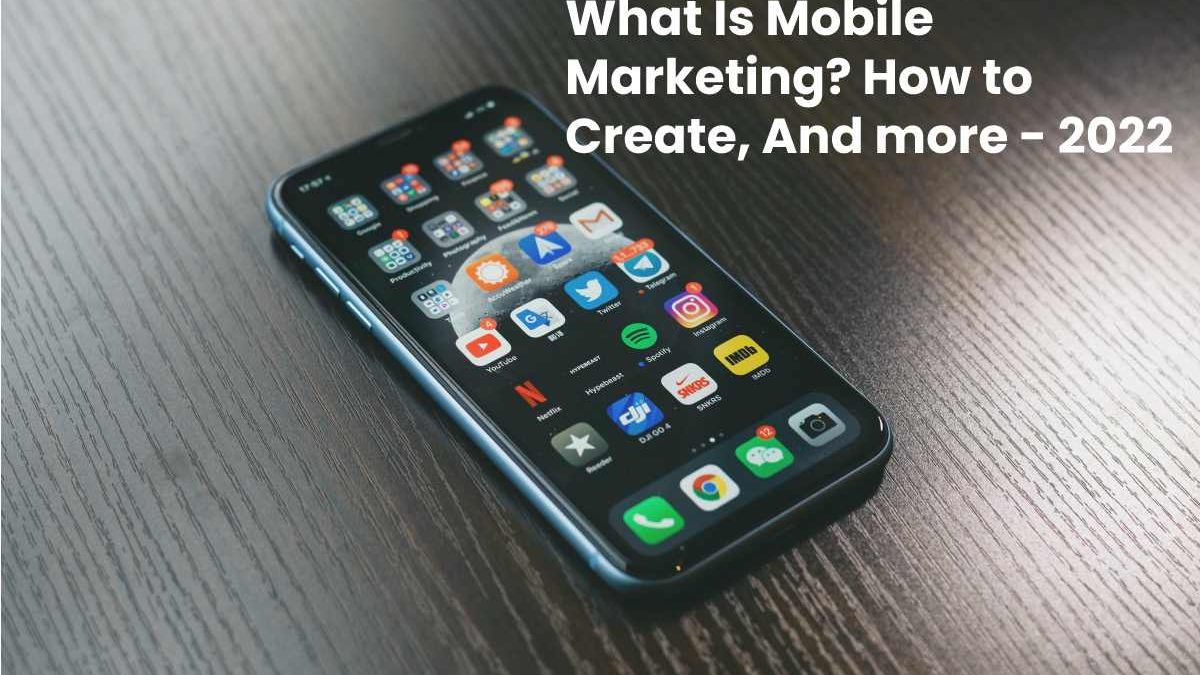Mobile marketing is located in a multi-channel digital marketing plan to reach a target audience using smartphones, tablets, and other mobile devices via websites, emails, SMS and MMS, social networks, and applications.

Mobile technology is transforming consumer interactions with brands. Everything that can be on a computer is now available on a mobile device. From original emails to visiting your website to reading content, everything has become accessible on a small mobile screen. Important points :
- 80% of Internet users own a smartphone.
- Mobile platforms, such as smartphones and tablets account for up to 60% of time spent on digital media in the United States.
- According to Google forecasts, searches on mobile devices should exceed searches on computers before the end of 2015.
For mobile advertising to be effective, you need to understand your mobile audience, design content for mobile platforms, and strategically use SMS/MMS and app marketing.
Table of Contents
How to Create a Mobile Marketing Strategy
As with any marketing effort, each brand/company will develop a unique mobile strategy based on their industry and target audience. Mobile technology is about personalization and individualization, And also is mobile marketing.
Create Mobile Shopper Profiles
The opening step in any marketing strategy is to understand your audience, and buyer profiles are an invaluable tool for doing that. Buyer profiles are theoretical representations of your different types of customers. Create a profile that outlines each person’s background, job description, critical sources of information, goals, challenges, preferred type of content, objections, and role in the buying process. It’s easier to determine the channel and tone of your marketing content when you have a clear picture of your target audience.
Also, focus on studying your target audience’s mobile habits in detail. How much of their internet use is on mobile devices? Are they comfortable shopping on a smartphone? The easiest way to get started is to research extensive data reports covering mobile device usage. Here are some interesting observations:
- 65% of all emails are first opened on a mobile device.
- 48% of users begin using a search engine when they log on to the Internet.
- 56% of B2B buyers use smartphones to access seller content.
- 95% of adults mainly use smartphones to contact satisfied/data.
To better understand your specific target market, And also screen your site’s mobile traffic numbers with Google Analytics. You can also ask your customers and prospects about their mobile web use.
A/B difficult, which compares two versions of the same campaign on a specific channel, can also provide valuable insights for developing all aspects of buyer profiles. When all extra factors are the same, do your email campaign landing pages receive more visits when you send a related email on weekends or weekdays? Morning or evening? Which email title or subject gets the most clicks?
General and specific data help develop audience profiles that include mobile device usage.
Set Goals
Bring key stakeholders together to determine your mobile marketing strategy. And also It is imperative to start by defining what success looks identical. Identify goals by requesting your team some of the following questions:
- What are our current activities in the mobile sector? Will set your starting point and ensure everyone is on the same page from the start.
- If you already do mobile marketing, what are the results of your current initiatives? This discussion will identify what is already employed, not working, and has not been measured.
- What are your main goals for integrating mobile marketing into your overall strategy? Discuss why you’re considering mobile now, the conversations that got you to this point, And also your expectations of mobile marketing.
- Who are your primary audiences in mobile marketing? Review customer profiles in light of mobile device usage updates. What are the unities and differences in the use of mobile devices among all your profiles?
- What are you doing to engage your mobile audience across channels? And also This discussion will explore how to incorporate the media you currently use into your mobile marketing strategy.
Define Key Performance Indicators (KPIs)
Mobile marketing needs to be test and optimize like your other marketing energies. Determine realistic and measurable KPIs that will define the success of your mobile campaign. For example :
- Engagement – Provide mobile-friendly content to potential customers seeking information about your industry or product. Your website should be mobile-friendly to improve mobile SEO.
- Acquisition – Prospect nurturing emails should be mobile-friendly and include clear calls to action. Buttons displayed in emails should be located at the top of the message and be large enough for easy clicks. Then organize easy-to-fill forms on your mobile-optimized homepage.
- Customer Service – Customer service is a real marketing opportunity in a socially connected market. Your customers should be able to easily reach you on any platform, And also with simple call buttons for smartphone users.
Step 4 – Monitor mobile metrics
Google Analytics can help you monitor the mobile practice of your location:
- Mobile behavior data disclose how well your mobile content captures your audience’s attention.
- Mobile conversion data will indicate if you need to optimize some of your home pages for a mobile browse.
Calculation of the “Trick Category” ground to the Residence Content Console will show the quantity and quality of a large portion of mobile traffic to each page on your site.
The website content analytics table includes a variety of metrics, And also including page views and bounce rate. Add the device category by clicking on the “Secondary Dimension” menu above the first column and selecting “Device Category” from the “Users” submenu. The table will then display the most visited pages on your site by a device to see the actual effect of mobile solutions on your web traffic.
Also Read: Upskilling And Reskilling: Explanations, Requirements, And more

